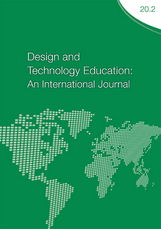The Threshold of Uncertainty in Teaching Design
DOI:
https://doi.org/10.24377/DTEIJ.article1599Keywords:
design pedagogy, higher education, liminal spaces, curriculumAbstract
In many of our universities and colleges there is a long established approach to teaching design through practice. For most students their end goal is to achieve a level of capability to function as designers in the professional world. Their education helps them construct a passport to enter this community of professional practice. Part of the legacy of the funding initiative in England to support research into teaching has been the development of a better understanding of a practice-based approach to design pedagogy. This was a principal focus in two centres funded by the initiative in which ‘signature pedagogies’ were identified as a distinguishing characteristic for developing student capability within various types of design practice, each of which contains those elements, which are characteristic of the discipline. This notion moves the emphasis away from the content of the curriculum and explores the importance of practical, embodied and experiential ways of knowing. Where these were investigated for product and automotive design the concept of transformative practice was identified as crucial. Designers typically employ two simultaneous interacting cognitive styles. From a five-year longitudinal study involving 89 design students, it became clear that in order to develop the confidence to match these two modes of thought, neophyte designers needed to surmount a barrier, or a threshold concept, which we labelled the toleration of design uncertainty. Accommodating effective arrangements to accomplish this has reinforced the importance of employing the traditional arrangement of studio teaching and given it a greater focus.
Downloads
Published
Issue
Section
License

This work is licensed under a Creative Commons Attribution 4.0 International License.
Authors who publish with this journal agree to the following terms:
Authors retain copyright and grant the journal right of first publication with the work simultaneously licensed under a Creative Commons Attribution License that allows others to share the work with an acknowledgement of the work's authorship and initial publication in this journal.
Authors are able to enter into separate, additional contractual arrangements for the non-exclusive distribution of the journal's published version of the work (e.g., post it to an institutional repository or publish it in a book), with an acknowledgement of its initial publication in this journal.



